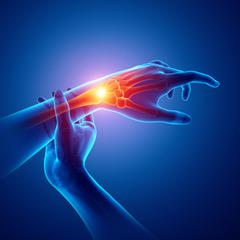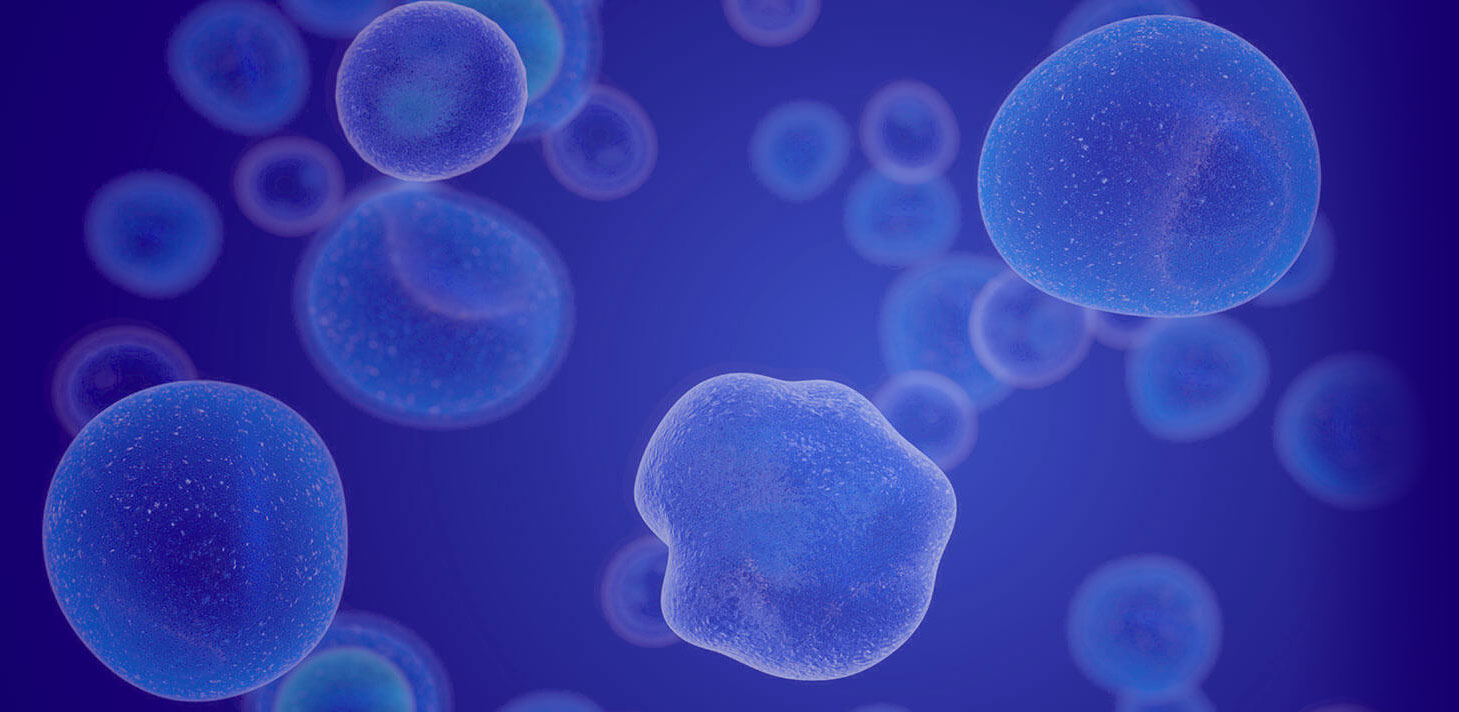Stem Cells for Wrist Pain
Conveniently located to serve the areas of Greenville, SC, Spartanburg, SC, Columbia, SC, Anderson, SC and Asheville, NC

Using the regenerative healing power of stem cells is the latest way to relieve mobility issues and pain in the wrist. A significant number of Americans suffer from wrist and hand ailments, which can feel as though they affect almost every area of life. The impact of constant pain from underlying arthritis and other types of hand and wrist injuries can be frustrating and cause significant discomfort.
If you’re suffering with wrist pain, Daisy Stem Cell Therapy at Advanced Regenerative Medicine Centers of the Carolinas can help. Dr. John Haasis is board-certified anesthesiologist and an expert in pain management, serving patients in Greenville, Spartanburg, Columbia, and Anderson, SC, and the North Carolina cities of Asheville. A personal consultation with Dr. Haasis allows patients the opportunity to find relief from wrist pain without surgical intervention. Call (864) 775-5682 or fill out a simple online form to get started.
Contents
About Wrist Pain
Two of the most valuable tools of the body are your hands. And, injuries and medical conditions can prevent you from using them. Many bones, ligaments, tendons, muscles, and supporting tissues make up the hand and wrist. Problems can be caused by external trauma, or an internal nerve, connective tissue, or bone problem. Any problems with these structures can lead to pain, inflammation, and stiffness in the hand, wrist, and arm.
A number of common hand/wrist problems routinely treated with regenerative medicine include carpal tunnel, trigger finger, tendon pain, osteoarthritis, and rheumatoid arthritis. Non-surgical stem cell therapy for hand and wrist injuries are at the forefront of orthopedic medicine, helping to alleviate wrist pain in patients across the country.
How Common is Wrist Pain?
Wrist pain is very common. In fact, a nationwide study estimates that 2.6 million hand and wrist injuries occur every year. (1) We need the dexterity of our hands to perform simple daily tasks, work-related duties, and complex exercises and activities. And when we can’t do that because of injury or disease, it puts limits on how active we can be.
Why Does My Wrist Hurt?
Almost two in 10 people have wrist pain at any specific point in time. (1) And the causes can be multiple. The most common include the following.
Carpal Tunnel Syndrome (CTS)
The carpal tunnel is an area of the wrist that contains tendons, ligaments, and small wrist bones. People who suffer from carpal tunnel syndrome, develop pain in the wrist due to a compressed nerve in this area. Symptoms of CTS include:
- Hand and Arm Pain
- Numbness
- Tingling Sensation
- Fine Motor Problems
- wrist weakness
Although carpal tunnel has a genetic component, it is more likely to occur in women aged 40-60. It is also more common in people who use computer keyboards for extended periods, and people who operate machinery that vibrates, such as construction workers. (2)
Tendon Injury
An injury to a wrist tendon can be caused by repeated strain or by the impact of outside forces, such as a slip or a fall. The extensor tendons enable the fingers to straighten (open hand), while the flexor tendons control finger retraction (closed hand, fist). While a serious tendon injury usually requires surgery, less severe damage can be treated without surgical intervention.
Osteoarthritis
Arthritis is the collective term for inflammation in the joints. Osteoarthritis refers to the deterioration of cartilages surrounding joints, and is the most common form of arthritis. Because the cartilage cushions joints, its deterioration causes problems with weight-bearing activities like lifting a heavier object. It is far more common in older patients, and can cause significant wrist mobility problems, weakness, and discomfort. Additionally, advanced osteoporosis can cause chronic pain in the affected area(s). (3)
Rheumatoid Arthritis
Like osteoarthritis, rheumatoid arthritis causes joint pain. But this condition causes the body to mistakenly attack its own tissues, which results in inflammation, swelling, and warmth in affected areas. Patients with rheumatoid arthritis are also more likely to have chronic health issues, such as irritable bowel disease (IBD). As with many other autoimmune conditions, rheumatoid arthritis can cause chronic fatigue, weakness, and fever.
Trigger Finger
Though it does not relate directly to the wrist, trigger finger is a related problem caused by inflammation in the finger tendon. This inflammation causes stiffness and tenderness in the affected digit, and often results in an inability to straighten the finger out. This results in a “locked” effect, where the finger remains stuck in a bent position.
How Can Stem Cells Help My Wrist Pain?
Stem cells are special cells in the body that can turn into any other cells. They also play a crucial role in tissue repair and replacement. In particular, types of stem cells, known as mesenchymal stem cells (MSCs), play an important role in repairing damaged tissues. So, they are particularly helpful in the treatment of wrist pain. Evidence suggests that these cells can address tendon weakness, and promote tendon healing. By introducing more stem cells to a problem area, doctors can support the healthy regeneration of wrist tissues, alleviating patient wrist pain.
Regenerative wrist treatments harvest a patient’s own adult stem cells and use them to support the regeneration of damaged connective tissues, such as cartilage and tendons, and even repair nerve damage (neuropathy). Studies show that stem cell therapy is a promising approach to the treatment of osteoarthritis, neuropathic pain, and musculoskeletal pain that has otherwise responded poorly to conventional medicine. (4) So, they could be instrumental in the treatment of your wrist pain!
Benefits of Stem Cell Therapy
- Naturally enhances your body’s innate self-repair capabilities
- Uses your own stem cells in specific target areas
- Provides long-lasting relief from chronic wrist pain
- Supports increased wrist functionality and range-of-motion
- Manages nerve pain, ligament pain, and pain from injury
- May significantly improve patients’ overall quality of life
Candidates
Dr. Haasis invites patients with chronic or acute wrist pain to discuss regenerative therapy at the Daisy Institute. Stem cell therapy is ideal for patients who:
- Are frequently impacted by wrist pain
- Do not require surgical intervention
- Have noticed a decline in wrist function
- Suffer from rheumatoid or osteoarthritis in the wrist
- Have medication-resistant nerve pain in the wrist
- Have received treatment for a wrist injury but still experience pain
Personal Consultation
The goal of a personal consultation is for you to meet Dr. Haasis, tell him about your wrist pain and how it affects your daily life, and find out if stem cell therapy is a good fit for your needs. He will gather your personal health information to inform the creation of an effective treatment plan. He will ask you to provide your medical history, and will inquire specifically about any historic wrist injury or joint problems. You may also be asked to complete a series of exercises to test the active range-of-motion, strength, and functionality in both of your wrists. After Dr. Haasis has discussed your wrist issues at length, he will determine whether stem cell therapy will be a suitable treatment pathway.
Procedure
Stem cells are uniquely able to divide indefinitely, so harvesting these most versatile of cell types efficiently is incredibly important. There are six key stages in the process:
- Stage 1: Stem cells are harvested from your body using the technique outlined in your treatment plan (injection or bone marrow).
- Stage 2: The cells are purified, concentrated, and evaluated for quality in preparation for transplantation.
- Stage 3: The activated stem cells are transplanted into the treatment area.
- Stage 4: The stem cells begin their work to regenerate and rejuvenate the area over a period of weeks and months
The rejuvenating results from stem cell therapy occur on a slow timeline, but that doesn’t reduce their effectiveness! It’s simply your body taking the time to use them well. Therefore, it may be around a month before you start to feel a difference. During this period, you can be safe in the knowledge that your body’s natural healing process is working steadily in the background. And now, it has the assistance of many more invigorating, pain-reducing mesenchymal stem cells!
Results
Patients usually notice some temporary discomfort at the injection site, and may experience mild soreness for up to a week. Please speak to Dr. Haasis about pain medications, as some medications, such as non-steroidal anti-inflammatories (aspirin, ibuprofen), may disrupt the effectiveness of your treatment. In time, you will notice a marked reduction in wrist pain, increased mobility, and better quality of life as you are no-longer physically limited by wrist discomfort.
Cost of Stem Cell Therapy in Asheville, NC
Patients with wrist pain in North and South Carolina are finally able to find relief through non-surgical stem cell therapy. As every person has unique needs, the cost of your treatment will vary. We will be happy to provide an estimate after Dr. Haasis has evaluated your wrist pain and the extent of your physical mobility/immobility as a result. Get started with booking your personal consultation at the Daisy Institute by calling (864) 775-5682 or by sending us a completed online contact form.
For more information about regenerative medicine, please see our FAQ page, or read the Daisy Institute blog.
References
- Costa F, Janela D, Molinos M, et al. Digital rehabilitation for hand and wrist pain: a single-arm prospective longitudinal cohort study. PAIN Reports. 2022;7(5):e1026. doi:10.1097/PR9.0000000000001026 https://journals.lww.com/painrpts/fulltext/2022/10000/digital_rehabilitation_for_hand_and_wrist_pain__a.8.aspx#:~:text=Wrist%20or%20hand%20pain%20(WP,most%20common%20work%2Drelated%20injury.&text=Over%20the%20past%20few%20decade,study%20in%20the%20United%20States.
- Sevy JO, Varacallo M. Carpal Tunnel Syndrome. PubMed. Published 2020. https://www.ncbi.nlm.nih.gov/books/NBK448179/
- Loo S, Wong N. Advantages and challenges of stem cell therapy for osteoarthritis (Review). Biomedical Reports. 2021;15(2). doi:10.3892/br.2021.1443 https://www.ncbi.nlm.nih.gov/pmc/articles/PMC8212446/
- Padda J, Khalid K, Zubair U, et al. Stem Cell Therapy and Its Significance in Pain Management. Cureus. 13(8):e17258. doi:10.7759/cureus.17258 https://www.ncbi.nlm.nih.gov/pmc/articles/PMC8445610/


